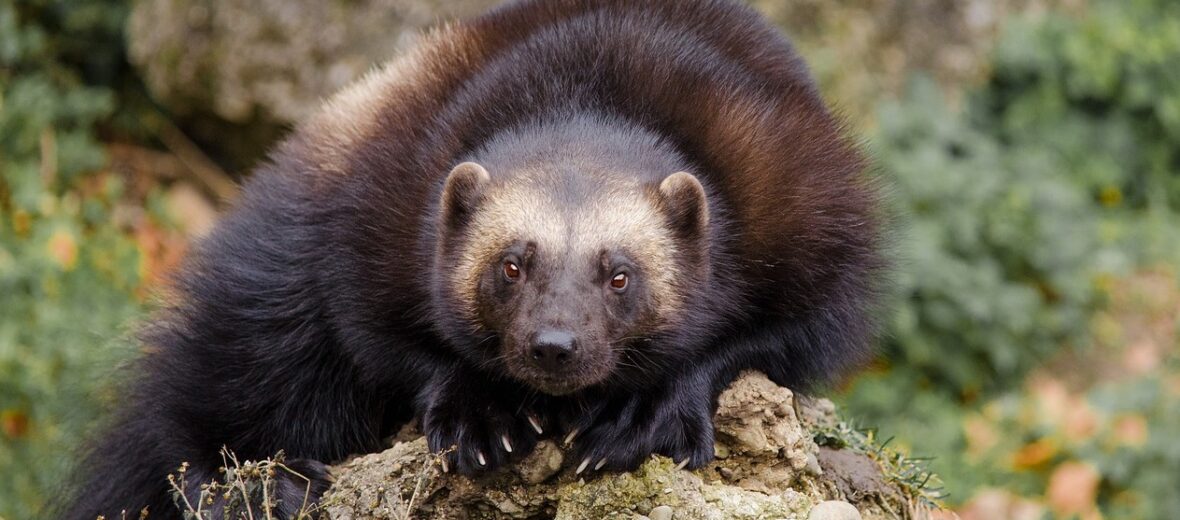
Looking like a small, ticked off bear, but actually the largest member of the weasel family, it’s the wolverine. They prefer life in the arctic and subarctic regions of North America, Canada, Northern Europe, Russia, and Siberia. Wolverines enjoy cold and snow filled boreal forests, tundra, and taiga. These ferocious critters are not only as tough as a honey badger, but they’d give the badger a run for its money in a fight. With fierce looking claws, sharp teeth, a strong bite, stinky scent glands, and an appetite for everything it sees, these creatures are very formidable.
First the Stats…
Scientific name: Gulo gulo
Weight: Up to 55 lbs.
Length: Up to 3.5 feet
Lifespan: Up to 17 years
Now on to the Facts!
1.) Wolverines are very good climbers that often can be seen up in tall trees. They use this to their advantage as they have been observed dropping from a tree onto the unsuspecting prey below. Surprise!
2.) The wolverine is a nocturnal (active at night) animal.
3.) Due to their short legs and slow lumbering gait, they wont chase down prey. They prefer to hide in wait, like the ambush predator they are, and pounce on their victims, catching them off guard.
4.) These fierce critters are primarily carnivorous (eat meat) but will occasionally eat vegetation, if the need arises. They are gluttons after all.
5.) Their preferred prey are rats, mice, rabbits, porcupines, squirrels, as well as young & injured deer and caribou.
But wait, there’s more on the wolverine!
6.) They have a very thick, dense, oily fur coat that is very hydrophobic (resists water). Due to this, they are able to withstand even the harshest of winters; even sleeping right out in the open, during the cold winter days. I told you they’re tough.
7.) A wolverine is gifted with a very keen sense of smell and hearing. They use these senses to detect prey. With their strong noses, they are even able to detect prey and carrion buried up to 20 feet under thick snow.
Did you know…?
Wolverines have a special little treat too. They are equipped with a scent gland near the base of their tail that squirts out a very strong and unpleasant odor, when they feel the need to do so. This has earned them the name “skunk bear”.
8.) They patrol a range of 30 – 620 square miles! Males typically cover a larger range than females.
9.) A wolverine will viciously defend its territory against other wolverines.
10.) Wolverines have a special upper molar which is rotated 90°, allowing them to tear apart flesh easier. Om nom nom!
But wait, there’s even more on the wolverine!
11.) Females undergo what is called a “delayed implantation” which means the eggs are in a kind of limbo in the uterus for a while before finally attaching themselves to the uterine wall. This helps to ensure the young are born when food is available.
Did you know…?
These beasts can travel up to 25 miles a night in search of food!
12.) Regardless of when mating occurs, they will typically give birth from January – April.
13.) Their scientific name “Gulo” translates to “glutton” due to their voracious appetite and single minded goal to eat everything they see.
14.) The female will birth 2 – 3 kits every 2 years or so.
15.) These critters are polygamous (male mates with several females).
Now a Short Wolverine Video!
Also, check out the Critter Science YouTube channel. Videos added frequently!
Want to suggest a critter for me to write about? Let me know here.




Leave a Reply